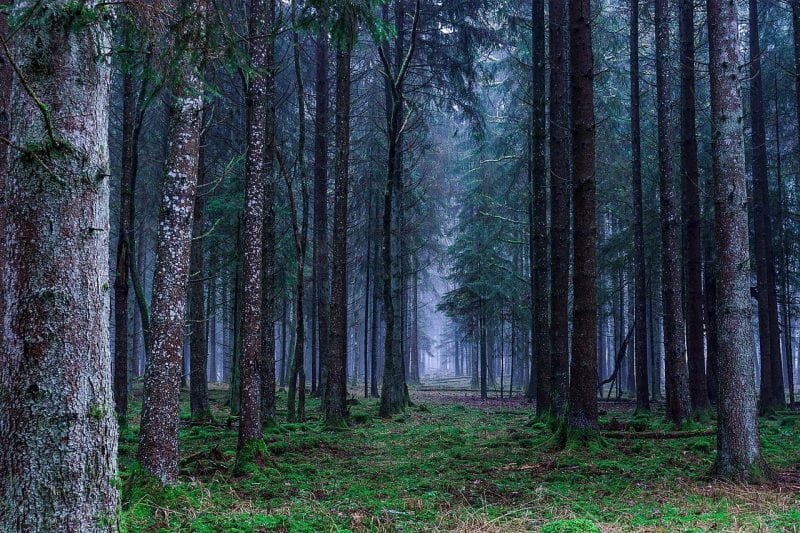by JENNIFER MORGAN
"Recent research suggests that forest protection and restoration, together with other “natural climate solutions”, can provide over one-third of the climate mitigation needed between now and 2030..."
[dropcap]T[/dropcap]he warning from the world’s top climate scientists that carbon dioxide (CO2) will need to be removed from the atmosphere to limit global warming to 1.5 degrees Celsius is both a due and dire recognition of the great task in front of us. What must not be forgotten, however, is the hope that our forests provide.
The Intergovernmental Panel on Climate Change (IPCC) has said limiting global warming to 1.5C is not only achievable but also critical, given the previously underestimated accelerating risks for every degree of warming beyond that target.
It has also suggested that the amount of carbon dioxide removal (CDR) that will be needed can be limited by significant and rapid cuts in emissions, but also reduced energy and land demand to a few hundred gigatonnes without relying on Bioenergy with Carbon Capture and Storage (BECCS).
This means forests and land use can and must play a key role in efforts to achieve 1.5 degrees, but governments and industry too often overlook why improved forest protection, as well as forest restoration, are crucial alternative solutions to risky CDR technologies such as BECCS.
While greenhouse gas emissions from agriculture and the destruction of forests and peatlands contribute heavily to climate change, the growth and restoration of forests can contribute significantly to reducing the concentration of CO2 in the atmosphere.

More than half of Europe's forests have disappeared over the past 6,000 years thanks to increasing demand for agricultural land and the use of wood as a source of fuel, new research led by the University of Plymouth suggests.
Read more at: https://phys.org/news/2018-01-europe-lost-forests-coverage-halved.html#jCp / Click image
Recent research suggests that forest protection and restoration, together with other “natural climate solutions”, can provide over one-third of the climate mitigation needed between now and 2030.
The IPCC has estimated that between 100 and 1,000 gigatonnes of CO2 will need to be removed from the atmosphere to meet the Paris goals. It has been broadly agreed that the most important natural “carbon sinks” are the world’s forests. To limit climate change, we must urgently adopt an holistic approach to forest and peatland protection.
This means deforestation must be halted and our remaining forests well protected, intact forests must be kept away from logging and other destructive activities, the management of used forests must change and where land is available, it must be restored with natural forests.
To allow these natural climate solutions to thrive, wildland fires, most of which are sparked by human activities and contribute to global warming, must also be reduced. The tragic and wide geographic spread of wildfires across Siberia, Europe and California during the northern hemisphere summer is a stark reminder of the threat climate change poses to our forests.
Our forests are our only natural and tested “technology” to lessen the impacts of climate change and protecting them will bring benefits that untried carbon removal technical solutions do not.
Forest protection will help communities adapt to climate change and support their livelihoods. Fires, droughts, floods, storms and their impacts can also be reduced, biodiversity protected, freshwater-cycles maintained and soil erosion prevented.
By accepting that our lands and forests are primarily needed to feed people, protect nature and protect the climate, rather than as resources for profit, areas for industrial agriculture, livestock or coal mining for example in Germany’s Hambach Forest, we can turn the tide against global warming.
The IPCC report identifies different pathways to limiting global warming to 1.5C, most of which are dependent to varying degrees on the deployment, future availability and success of more technological, but so far unproven, approaches to CDR, and, in particular, BECCS.
Deployment of BECCS would involve massive upscaling in intensive production of monoculture crops or tree plantations, leading to increased loss of natural habitats and biodiversity, threatening indigenous peoples, small farmers and local communities, squeezing land needed for food production and increasing water demand and agrochemical pollution.
Bioenergy without carbon capture and storage is contributing to, rather than helping mitigate, climate change and there exists great uncertainty around the technical feasibility, safety, sustainability and cost of long-term geological carbon storage.
This is why we need to act on the IPCC report and re-appraise the way we view our forests. One-third of the global forest area has already been cleared for arable land, grassland, settlements and roads in the last millennium.
We can halt and reverse this trend by ending the expansion of agricultural crops, particularly for bio-energy and animal feed, into natural ecosystems. We must also embark on a dramatic change to our agricultural practices, embracing ecological agriculture and shifting to a diet less reliant on meat to reduce emissions from livestock.
What is required is bold action from governments and industry to commit to forest protection and restoration while upholding the rights of indigenous people. By seizing the opportunity now to restore deforested areas and opt against false solutions such as BECCS, we can ensure our forests fulfil their critical role.
Home to millions of people, our forests offer us a path towards climate mitigation, but we have no time to waste.

This work is licensed under a Creative Commons Attribution-NonCommercial 4.0 International License






Those damn Commie Chinese are involved in a massive tree planting effort to stop desertification. And then, there is this inspiring story, whether true or fable.
https://www.youtube.com/watch?v=KTvYh8ar3tc